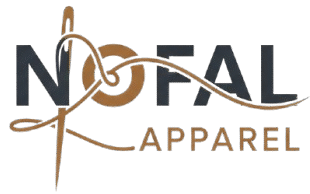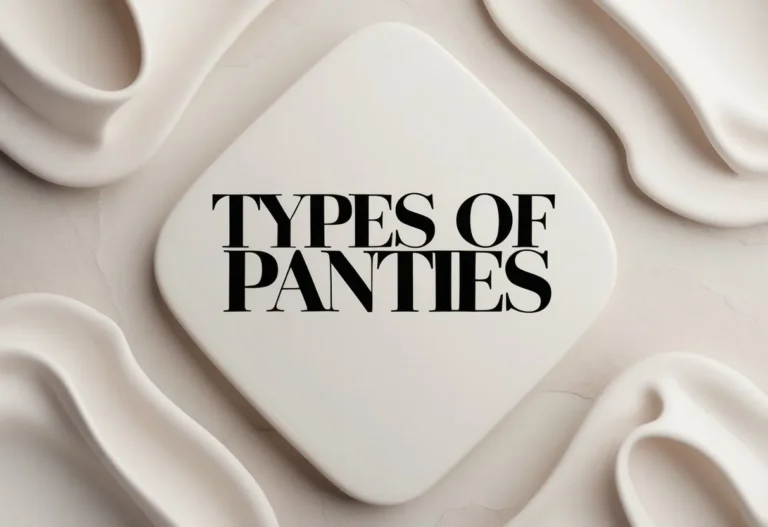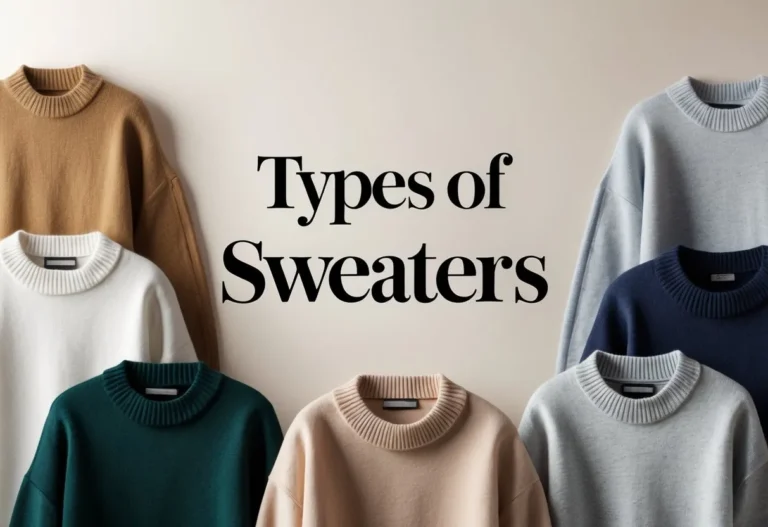Buttons are small but important parts of clothing that help fasten fabric and add style. They come in many shapes, sizes, and materials, making them useful for different types of clothes. Understanding the types of buttons can help in choosing the right one for a garment’s function and look.
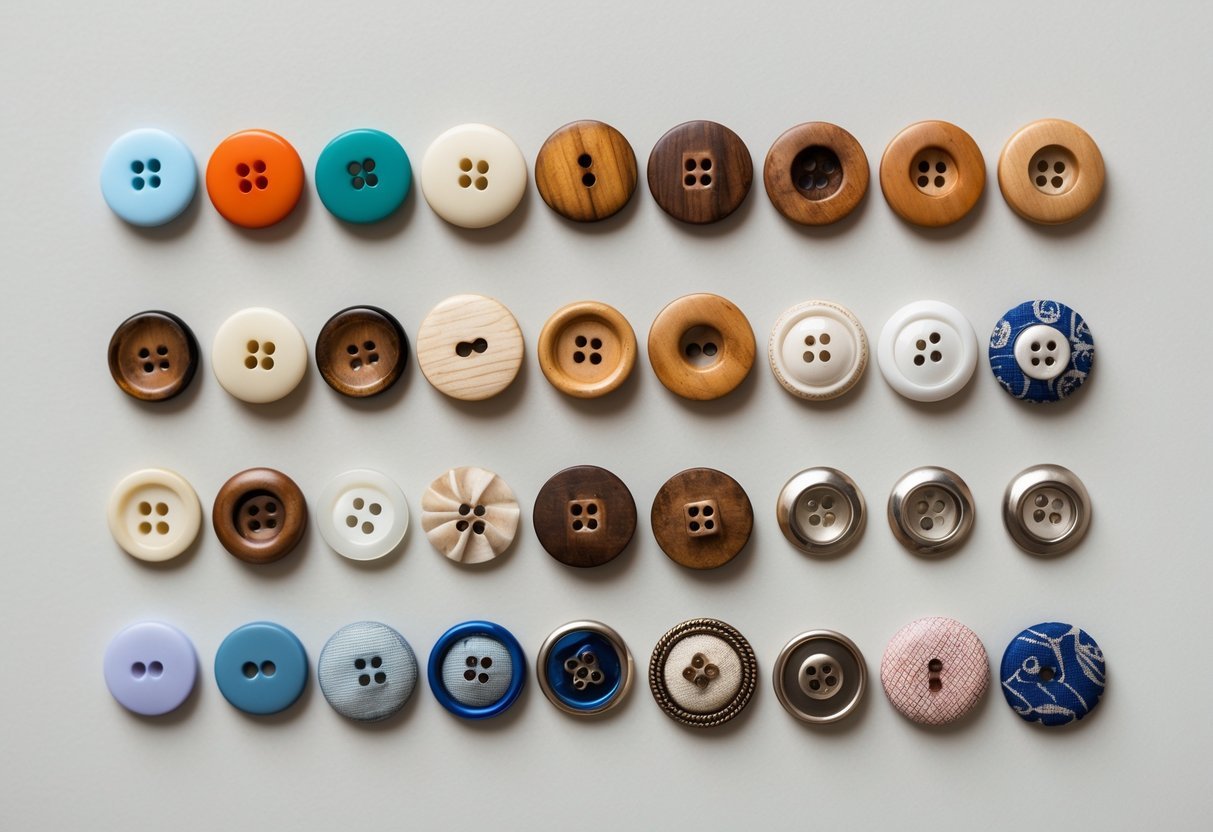
The types of buttons used on clothes vary depending on the garment’s style, material, and intended use. This variety allows buttons to serve both practical and decorative roles, improving the fit and appearance of clothing. Recognizing these differences can give a better appreciation of everyday clothing choices.
1) Flat Buttons with 2 Holes

Flat buttons with 2 holes are one of the most common types used in clothing. They have two small holes through which thread is sewn to attach the button to fabric. This design keeps the button flat against the material.
These buttons are simple and easy to sew. They are often made from materials like plastic, resin, or wood. The 2-hole design works well on light to medium-weight fabrics.
Because of their basic shape, 2-hole flat buttons offer a clean and neat look. They are popular on shirts, blouses, and other everyday clothes. Their small size and smooth surface make them very versatile.
The sewing method for these buttons usually involves stitching the thread through the two holes repeatedly. This ensures the button stays secure. They do not have an anchor or backing like shank buttons, which means the fabric lies flat under the button.
Flat buttons with 2 holes balance ease of use with function. They suit many garment types and projects, making them a reliable choice in clothing design.
2) Flat Buttons with 4 Holes
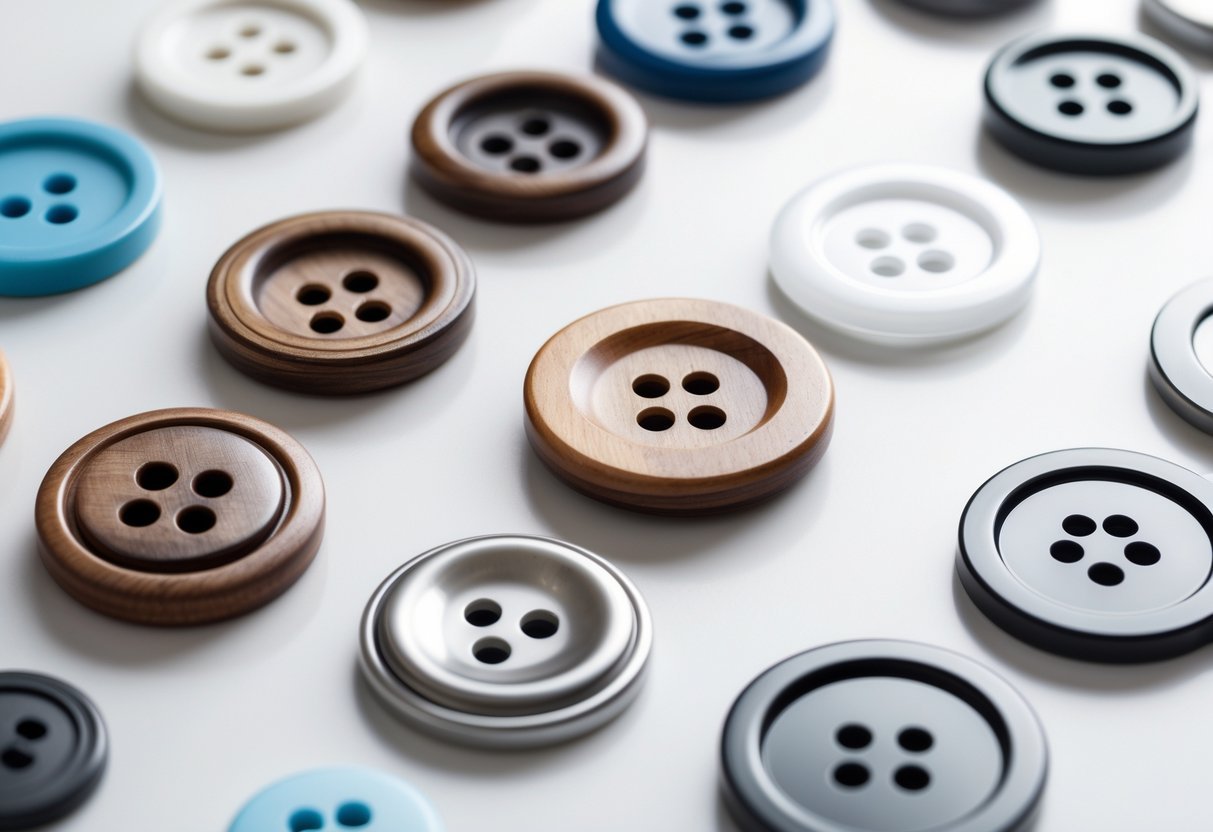
Flat buttons with 4 holes are a common type of button used on many clothes. They have four small holes arranged in a square or rectangle. This design allows for strong stitching and durable attachment to fabric.
These buttons are easy to sew through because of the holes. The four holes give more options for stitching patterns. This helps keep the button securely fastened, even on heavier or often-used garments.
Flat 4-hole buttons come in various materials like plastic, metal, wood, and pearl. They are versatile and can be used on shirts, dresses, cardigans, and coats. They usually lie flat against the fabric and do not add much bulk.
The 4-hole design offers better stability than 2-hole buttons. This makes them suitable for clothes that need a secure closure, such as outerwear or uniforms. The style is simple and functional, working well for many clothing types.
3) Shank Buttons
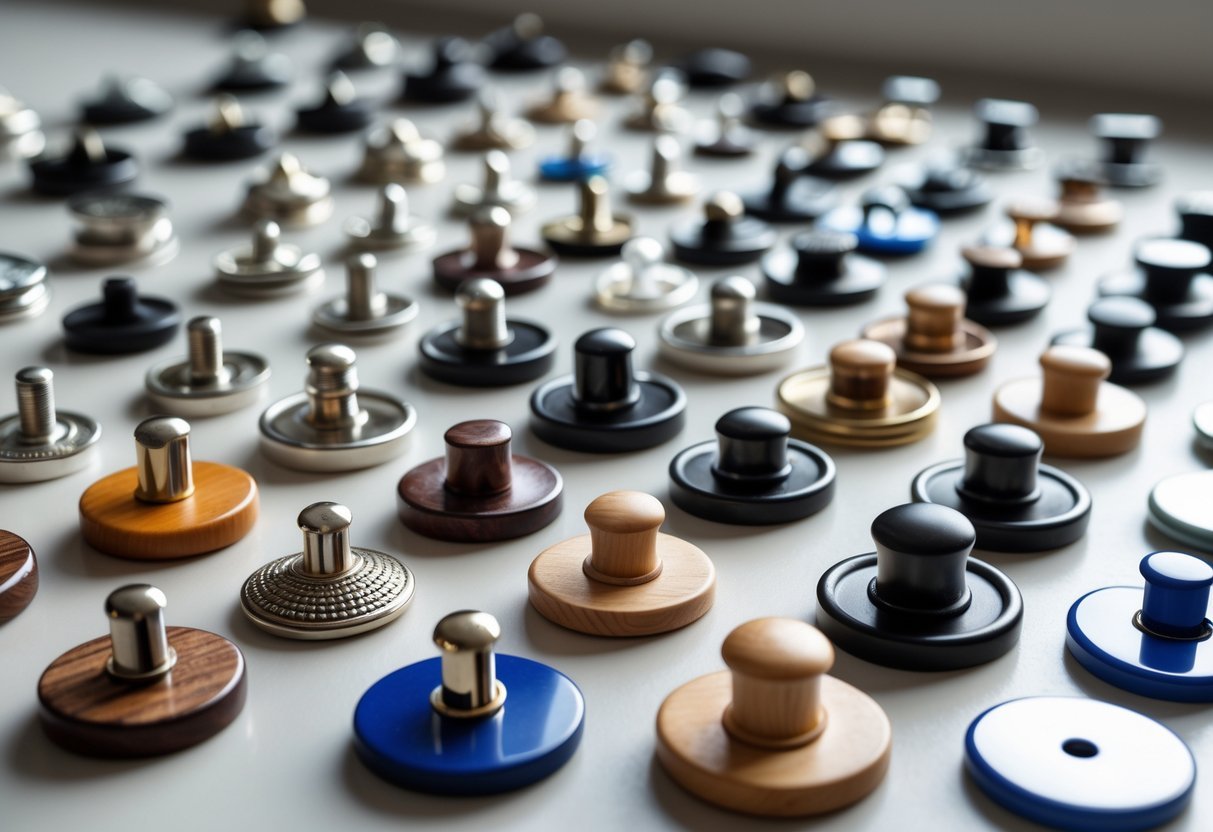
Shank buttons have a small loop or hole on the back instead of holes through the face. This loop is called a shank, and it is used to sew the button onto the fabric. The shank creates a small space between the button and the fabric.
This design helps shank buttons work well on thick or heavy fabrics. It allows the fabric to fit under the button without pulling or bunching. Shank buttons are often used on coats, jackets, and suits.
These buttons come in many materials, such as metal, plastic, wood, and glass. They can be plain or decorative, depending on the garment’s style. Since shank buttons stick out more than flat buttons, they can add texture and style to the clothing.
Sewing shank buttons requires attaching the thread through the shank, not through holes in the button face. This makes them strong and less likely to come off with heavy use or frequent washing.
4) Stud Buttons

Stud buttons are a type of button commonly used on denim clothing like jeans and jackets. They consist of two parts that secure fabric between them. This design makes them very strong and durable.
These buttons do not have holes like regular buttons. Instead, they fasten by pressing one part into the other. This makes them suitable for heavy fabrics that need secure closures.
Stud buttons are often made of metal. Their solid construction helps them resist wear and tear. Because of this, they are popular in workwear and casual outerwear.
They are easy to use and add a rugged look to garments. Stud buttons are not just functional; they also serve as a style detail on denim and similar fabrics.
5) Toggle Buttons
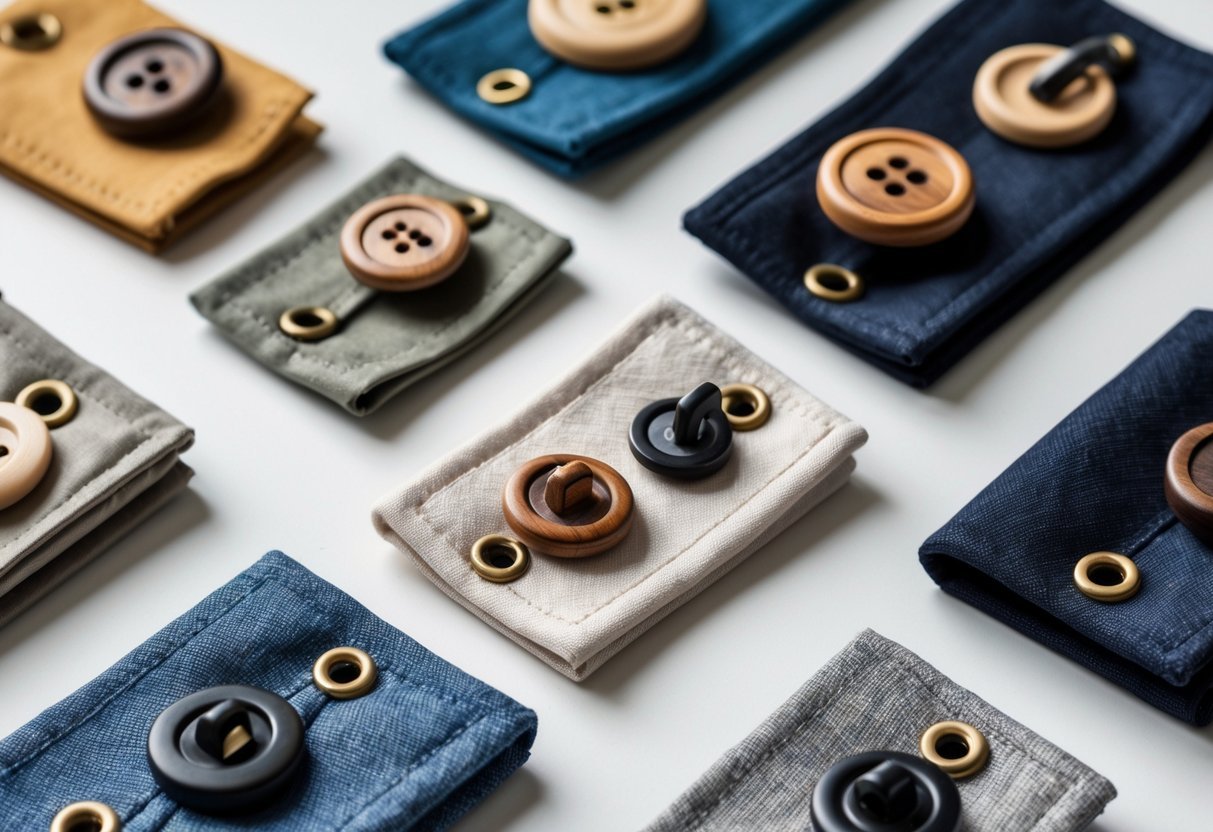
Toggle buttons are a simple type of closure used to fasten two pieces of fabric together. They usually consist of a small bar or disc attached to a loop or cord. This design makes them easy to fasten and unfasten.
They are most common on outerwear like coats and sweaters. Toggle buttons are also found on bags and other accessories for both function and decoration.
Made from materials like wood, plastic, or metal, toggle buttons offer a distinctive look. They are often larger than standard buttons, which makes them stand out on clothing.
Their easy use and unique style make toggle buttons practical for heavier or thicker fabrics. They are less likely to come undone compared to flat buttons. This makes them reliable for keeping garments closed.
6) Snap Buttons

Snap buttons are fasteners made of two parts that snap together to close clothing. They are commonly used on jackets, shirts, and bags because they offer a quick and secure way to fasten items.
These buttons come in different materials like metal, plastic, and resin. Metal snap buttons tend to be strong and durable. Plastic ones are lighter and often used for casual or children’s clothing.
Snap buttons are easy to install with the right tools. They do not require sewing, which makes them popular for DIY projects and mass production. Their design provides a smooth, flat finish without the bulk of traditional buttons.
Because snap buttons are simple to use, they are favored in garments that need frequent opening and closing. They also add a modern look to clothing while serving a practical purpose.
7) Covered Buttons

Covered buttons are buttons wrapped in fabric. The fabric is tightly stretched over the button base. This makes the button blend smoothly with the garment.
They are often used when the button needs to match the clothing exactly. Covered buttons add a clean, seamless look. They are common on coats, dresses, and upholstery.
These buttons usually come as shank buttons, which means they have a loop on the back for sewing. This loop makes it easier to attach the button without sewing through the fabric covering.
Covered buttons can be made with a variety of fabrics. This includes cotton, silk, velvet, or any other material that matches the garment.
Because the fabric covers them, covered buttons may need extra care when cleaning to avoid damage. They add a subtle but stylish touch to many types of clothing.
8) Wooden Buttons

Wooden buttons are popular for their natural look and feel. They are often chosen to add a rustic or earthy touch to clothing. These buttons come in various shapes, such as round, square, or oval.
They can be made from different types of wood, like oak, cherry, walnut, or maple. This variety allows for unique textures and colors. Wooden buttons may also be carved or painted for decorative effects.
Wooden buttons work well on casual wear and outerwear. They tend to suit fabrics like wool, cotton, and denim. These buttons are sturdy but should be kept away from excessive moisture to avoid damage.
Because of their simplicity, wooden buttons bring a classic style to garments. They are both functional and decorative, making them a versatile choice for many clothing items.
9) Metal Buttons
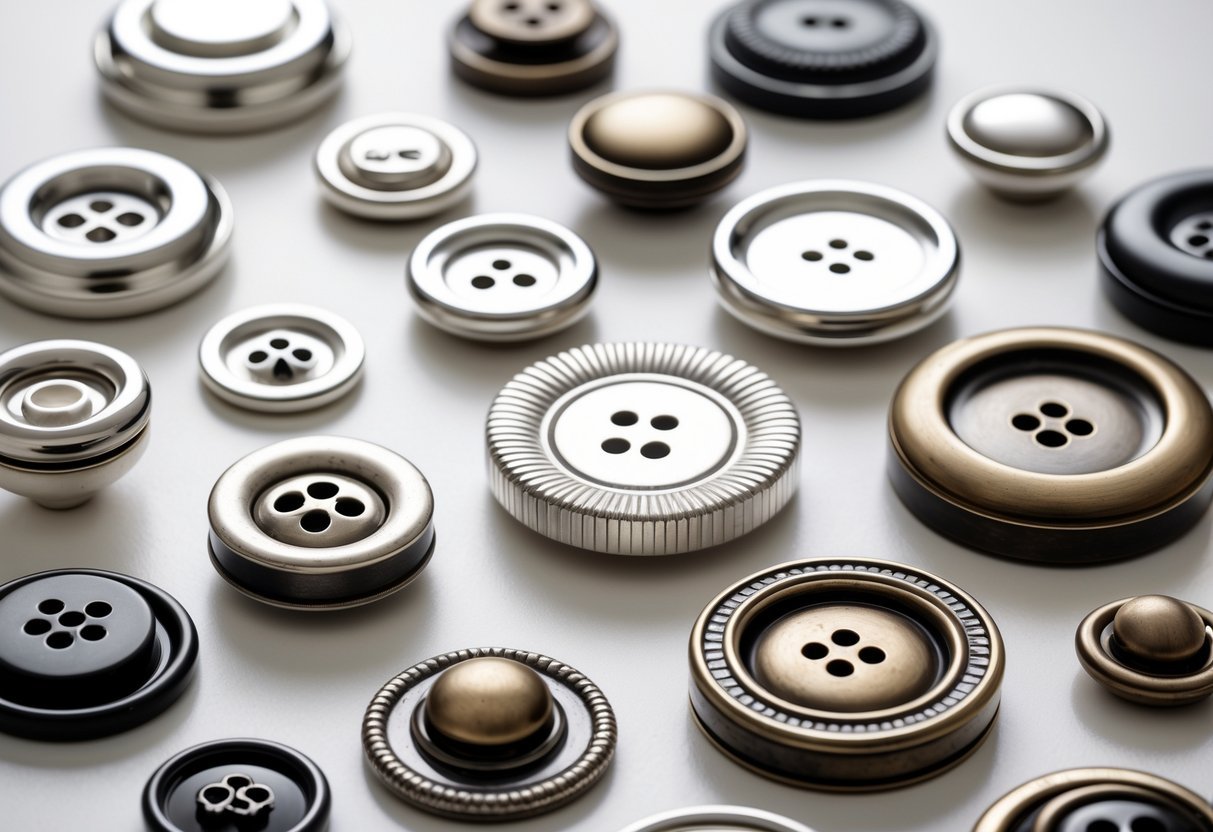
Metal buttons are made from various metals like aluminum, brass, copper, iron, stainless steel, and zinc alloy. They are known for being strong and durable, which makes them suitable for heavy-duty clothing and accessories.
These buttons come in many shapes and sizes. They can be round, square, or even custom shapes to fit the style of the garment.
Metal buttons are often used on denim, coats, and workwear because they can handle wear and tear better than plastic or wood buttons. They also offer a clean, polished look.
Some metal buttons have a shank, which is a small loop on the back. This helps them sit better on thicker fabrics.
Because of their strength and versatility, metal buttons are a popular choice for both casual and formal clothes. They add functionality without sacrificing style.
10) Ceramic Buttons
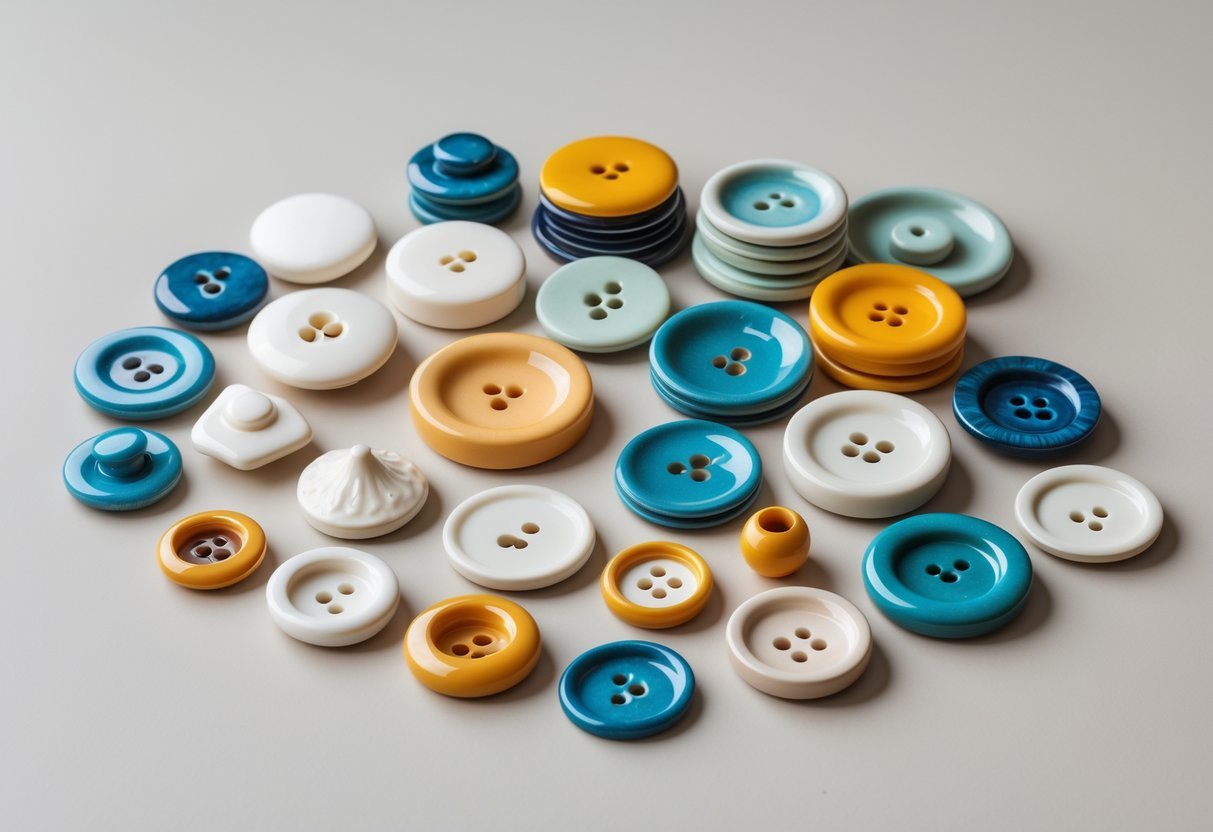
Ceramic buttons are made from clay that is shaped and fired at high temperatures. This process makes them hard and durable. They can last a long time when used on clothing.
These buttons come in many designs and colors. The glaze used during firing gives each button a unique texture and finish. This makes ceramic buttons popular for adding style to garments.
They are often chosen for decorative purposes rather than heavy use. Ceramic buttons work well on light to medium-weight fabrics. Their fragile nature means they can break if bent or dropped.
Ceramic buttons offer a different look compared to plastic or metal ones. They provide a more handcrafted and artistic feel. This makes them suitable for special items or craft projects.
Common Materials Used In Clothing Buttons
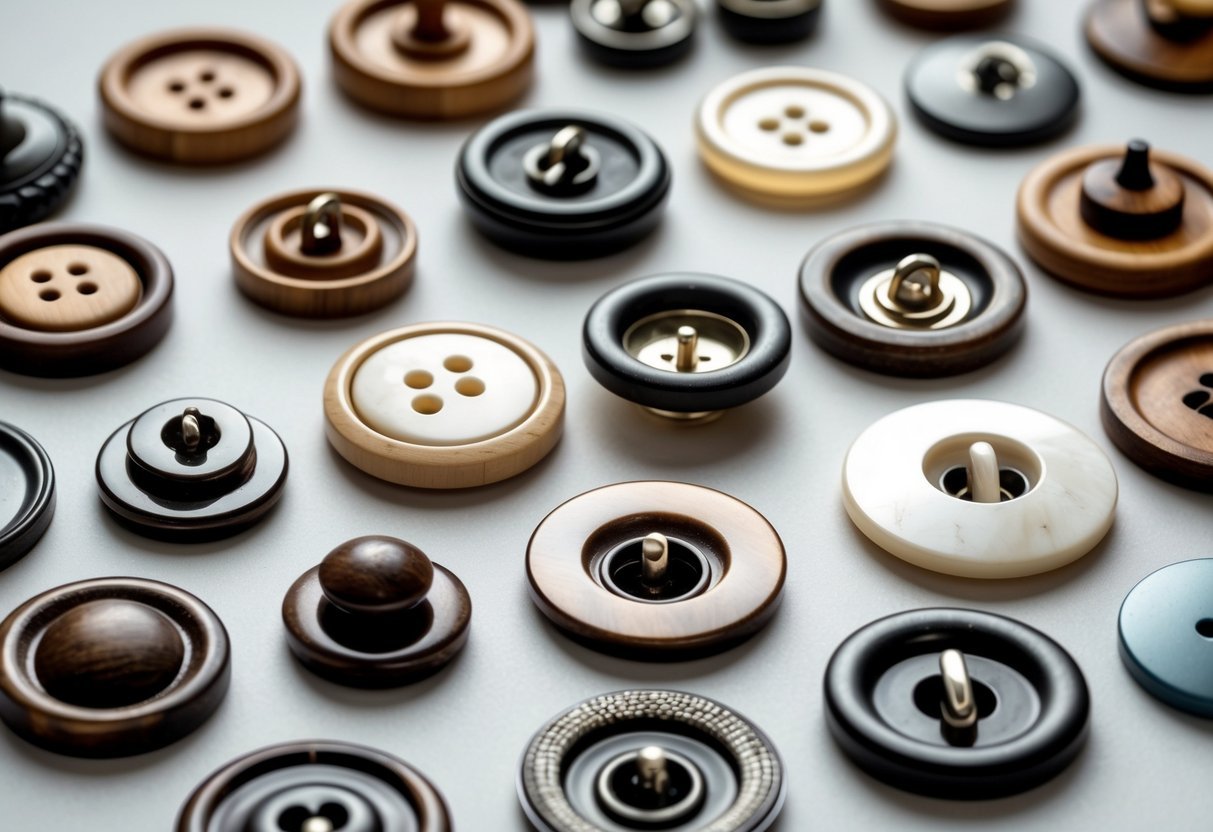
Buttons can be made from a variety of materials, each chosen for its durability, appearance, and how it fits with the garment’s style. Some materials come from nature, while others are man-made. Both types offer different benefits and uses in clothing design.
Natural Materials Overview
Natural materials for buttons include wood, metal, bone, shell, and horn. These materials are valued for their unique textures and classic looks. For example, shell buttons often have a shiny, iridescent surface, making them popular for dress shirts and blouses.
Wood buttons provide a rustic or vintage feel, often used on jackets and sweaters. Bone and horn buttons are durable and usually found on high-end or traditional garments. Metal buttons bring strength and can be decorative, commonly used on coats and jeans.
Natural materials are usually heavier and may require special care to maintain their quality and appearance over time.
Synthetic Materials Overview
Synthetic buttons are made mostly from plastics like nylon and polyester. These materials are lightweight, strong, and affordable. They can be molded into many shapes, sizes, and colors, making them highly versatile for different clothing types.
Hard plastic buttons are the most common in modern clothing, often chosen for everyday wear because they resist moisture and breakage. Other synthetic options include resin and acrylic, which offer glossy finishes or mimic natural materials at a lower cost.
Synthetic buttons are easy to clean and maintain, which makes them popular for casual and sportswear. They are also widely used in mass production due to their consistent quality.
Choosing The Right Button Type For Garments

Selecting the proper button depends on how it will be used and the look desired for the garment. Factors like the fabric’s weight and the garment’s function help decide which button fits best. Style elements also guide the decision based on the garment’s design and overall appearance.
Functionality And Durability
The durability of a button must match the garment’s intended use. Heavy fabrics like denim or coats often need stud buttons or shank buttons because they can handle more wear and tear without breaking. Lightweight fabrics, such as cotton shirts or blouses, usually work well with 2-hole or 4-hole flat buttons.
Buttons attached with holes sew tightly to the fabric, making them secure but sometimes less flexible. Shank buttons, which have a small loop behind, provide extra space to fasten bulky or thick materials. The choice also depends on how often the garment will be used or washed. Buttons for daily wear require tougher materials like metal or reinforced plastic.
Aesthetic And Style Considerations
Colors, shapes, and materials of buttons impact the garment’s style. A smooth flat button enhances simple designs, while a textured or decorative button adds a unique touch. For example, toggle buttons are often used on coats for a rustic look, while shiny metal studs suit denim jackets.
Designers consider button size to keep balance with the garment. Large buttons work well on heavy fabrics but may overwhelm delicate clothes. Clear or neutral buttons can keep focus on fabric patterns, while bold colors create contrast or highlight details. The button style can also communicate casualness or formality, affecting how the garment is perceived.
Frequently Asked Questions
Buttons come in different materials, sizes, and styles that suit various garments. Their uses range from basic fastening to adding style or durability. Attachment methods vary to match fabric types and garment needs.
What are the different materials used to make buttons for clothing?
Common materials include plastic, metal, wood, and fabric-covered options. Plastic is the most widely used due to its low cost and versatility. Metal buttons are popular for durability and style, especially on jackets and denim.
How do I choose the appropriate button size for my garment?
Button size depends on the garment’s fabric weight and style. Heavy fabrics like coats need larger, sturdier buttons such as shank buttons. Lighter fabrics use smaller flat buttons with 2 or 4 holes.
What are the distinct functions of buttons in fashion design?
Buttons serve to fasten clothing securely and add decorative detail. Some types, like stud buttons, offer extra closure strength for heavy fabrics. Others, like toggle buttons, are functional on outerwear and create a distinctive look.
Can you describe the various button attachment techniques for different fabrics?
Flat buttons with holes are sewn directly onto fabric using thread. Shank buttons have a loop on the back for easier fastening on thick fabrics. Stud buttons often use a snap or rivet system, providing strong hold on heavy materials.
What are the most durable types of buttons for daily wear garments?
Shank buttons and stud buttons are highly durable, suited for heavy use on coats and denim. Metal buttons also tend to last longer than plastic, especially when exposed to regular wear and washing.
How can I identify vintage or antique buttons for clothing restoration?
Vintage buttons often feature unique materials like glass, bone, or carved wood. Look for handcrafted details, unusual shapes, or aged finishes. Authentication can also involve checking for maker marks or researching button styles from specific time periods.
